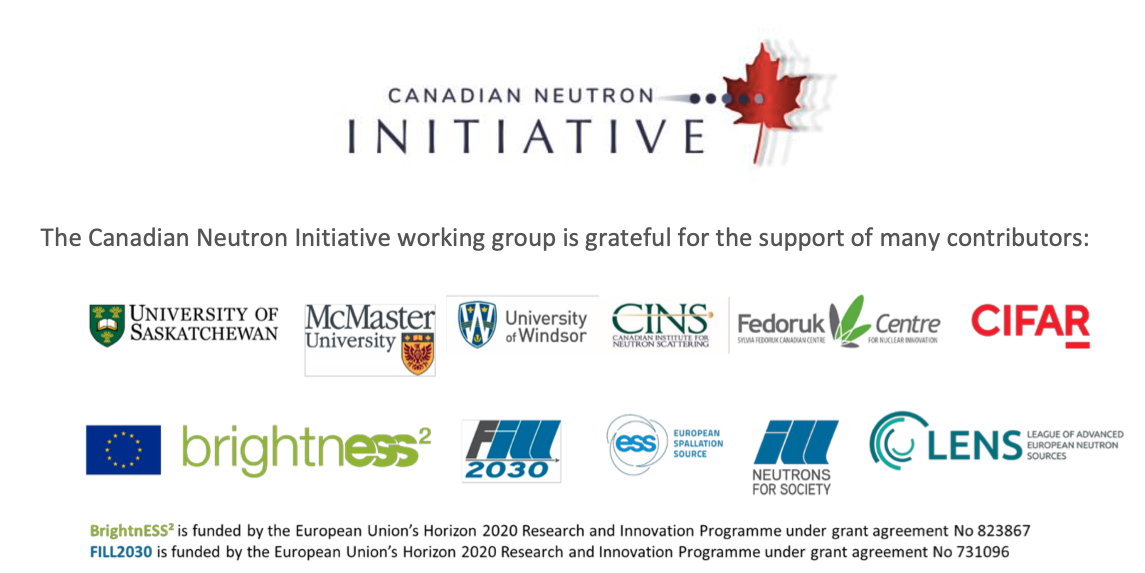Report on collaboration between Canada and ESS published by CNI; National Neutron Strategy released

A goal of BrightnESS² WP5 is the globalisation of the European Spallation Source ERIC (ESS) member base. One target for these enlargement activities has been Canada, the birthplace of neutron scattering and home to a strong cohort of accomplished neutron scientists. BrightnESS² partnered with the Canadian Neutron Initiative (CNI) to support the development of a Canadian national neutron strategy. In February 2022, the CNI working group published a report on the outcomes of the group's activities supported by BrightnESS², which were aimed at establishing a long-term partnership with ESS. That report has fed directly into CNI's The National Neutron Strategy: A strategy to rebuild Canadian capacity for materials research with neutron beams, released at the end of March 2022.
Based at the Sylvia Fedoruk Canadian Centre for Nuclear Innovation, CNI is a pan-Canadian effort to rebuild national capabilities for materials research with neutron beams. The CNI working group report demonstrates the fullness and effectiveness of the multi-year collaboration with ESS, including participation by the Institut Laue-Langevin and the League of advanced European Neutron Sources (LENS), and it outlines the strategies in play over the next decade designed to enable a future partnership with ESS: capital investment, participation in long-range planning, knowledge exchange, and direct competitive access.
Please download the full report here.
The Canadian National Neutron Strategy can be found here.
From the report's conclusion: The partnership with the ESS through the BrightnESS2 project has been successful at meeting its objectives. The CNI working group has secured support for a national neutron strategy and for the creation of a national coordinating organization, Neutrons Canada. Neutrons Canada is expected to represent Canada to foreign neutron sources. Until Neutrons Canada is formally established, which is estimated to take place over the next year or two, the CNI working group is interested in continuing the dialogue with the ESS to explore further collaboration opportunities. Modes of collaboration between Canada and the ESS could include exchanging knowledge through research collaborations and knowledge-sharing events; cooperating on the development of the long-range plan for neutron infrastructure for Canada; conducting experiments granted through the competitions for beam time for non-member countries; and investing in neutron beamline capital projects that leverage access to beam time and to the scientific activities of the ESS—each of which would lay the foundations for Canada to hold Observer status or even become an Associate Member in the ESS in 2030 or beyond.
Outcomes of the Canadian roundtable on a national neutron strategy, February 2021
An emerging national neutron strategy in Canada, January 2021
Canada publishes report from Ottawa Roundtable, May 2020
Europe leans in to help establish Neutrons Canada, February 2020

